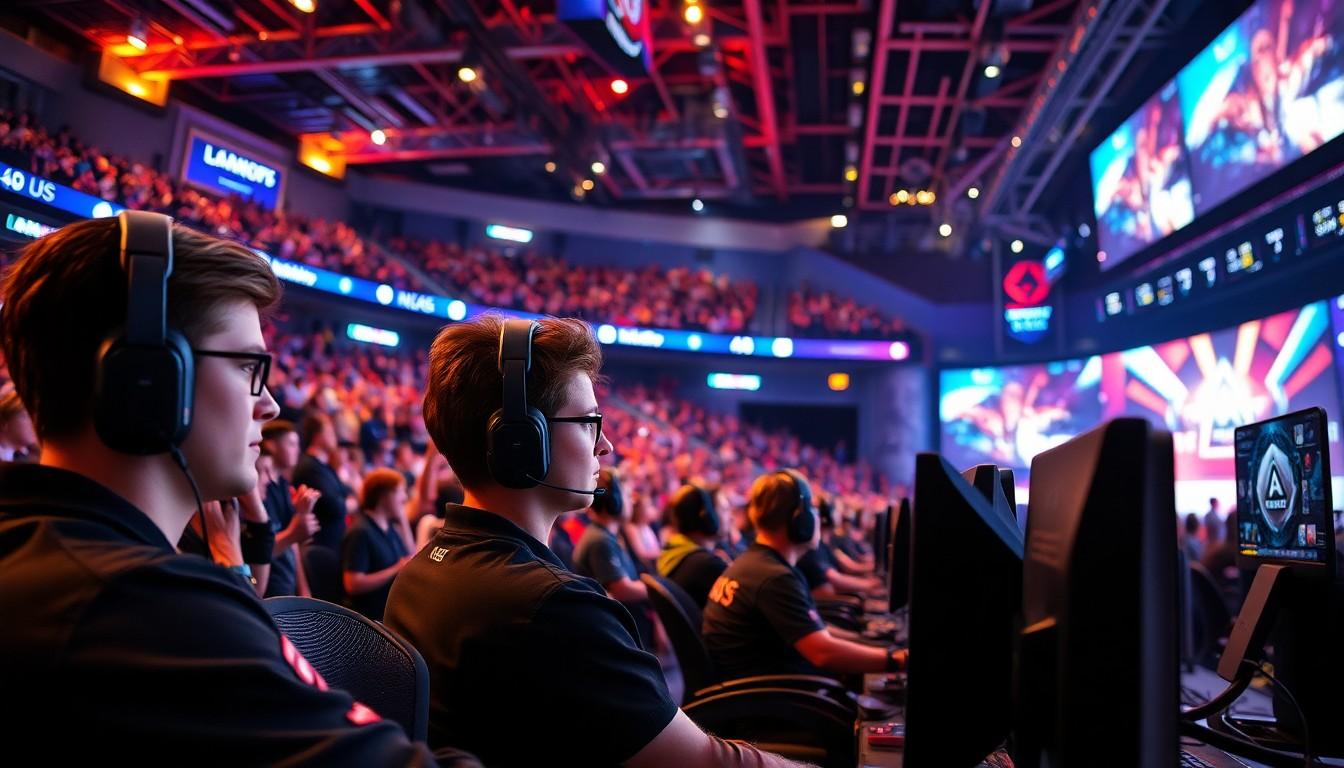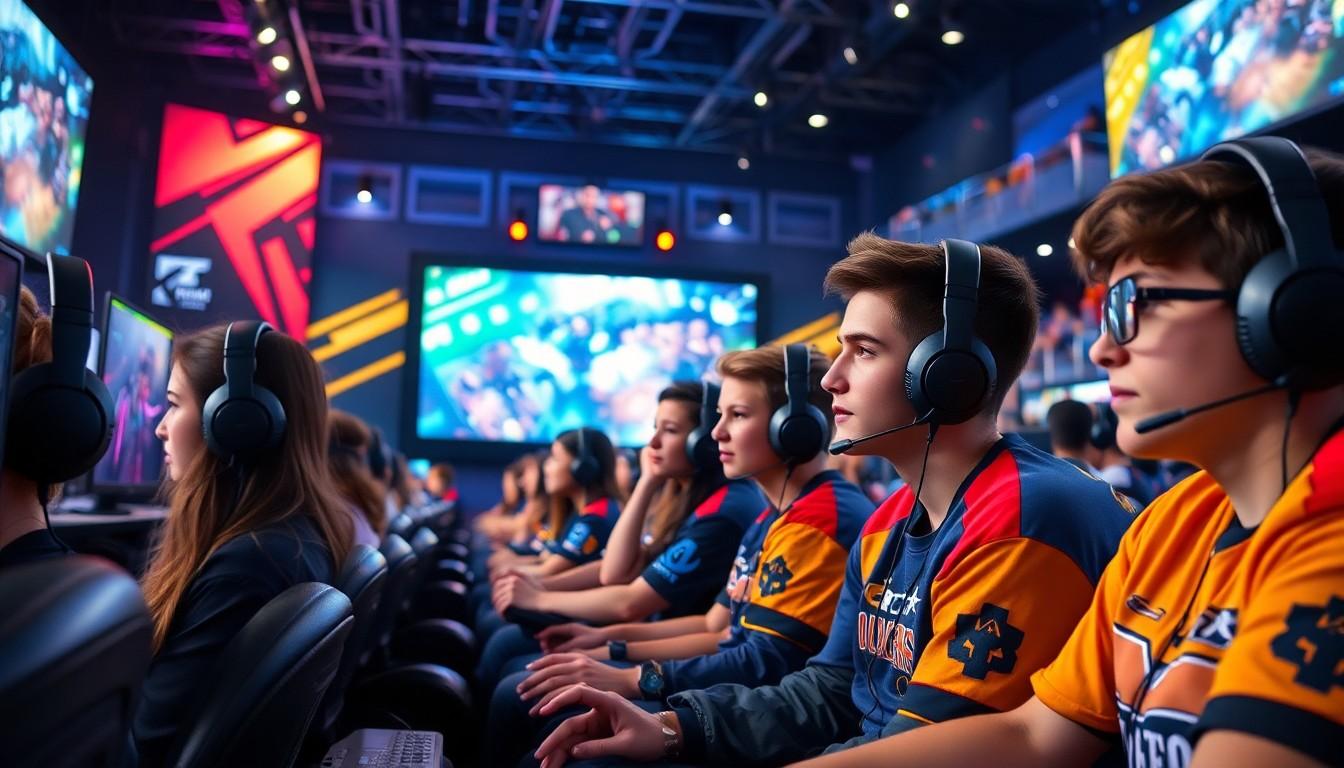In a world where gaming isn’t just a pastime but a booming industry, the game business and esports have taken center stage. With millions glued to their screens, battling it out in virtual arenas, it’s clear that this isn’t just a hobby—it’s a goldmine. From casual gamers to professional teams, the stakes are higher than ever, and the rewards? Well, let’s just say they can rival a lottery win!
Imagine a universe where skill meets strategy and where the only thing standing between victory and defeat is a well-timed click. Esports is no longer the underdog; it’s a titan, drawing in sponsors, fans, and a wave of investment that’s hard to ignore. As the lines between gaming and business blur, it’s time to dive into this electrifying world where pixels and profits collide.
game business and esports
The game business and esports industry has evolved significantly over the past decade. This sector now generates billions of dollars annually, with global revenue estimates reaching over $200 billion in 2023. Many companies recognize the financial potential and invest heavily in game development and esports events. Various platforms, like Twitch and YouTube, further amplify this growth by providing robust streaming services that enhance viewer engagement.
Players form the backbone of this industry, with millions participating in competitive gaming. Competitive gaming attracts large audiences, often rivaling traditional sports in viewership numbers. Major tournaments, such as The International and the League of Legends World Championship, can draw in tens of millions of live viewers. Prize pools for these events often exceed $30 million, showcasing the stakes involved.
Sponsorships play a crucial role in supporting esports organizations. Brands like Intel, Coca-Cola, and Red Bull allocate substantial budgets toward sponsorship deals and advertising. This investment in teams and events enhances the visibility of both sponsors and the esports industry.
Merchandise sales contribute to the revenue stream as well. Fans frequently purchase apparel, gaming gear, and collectibles. In-game purchases, such as skins or battle passes, add to this financial landscape, further establishing games as viable business entities.
New games continue to emerge, adding both competition and choice for players. Developers adapt constantly to user preferences, ensuring a dynamic gaming environment. Collaborations between traditional sports teams and esports organizations strengthen this exciting intersection. Overall, the landscape of game business and esports represents a vast terrain of opportunities that continues to engage and attract diverse audiences.
Growth of the Esports Industry

The esports industry experiences substantial growth, showcasing its evolution into a major entertainment sector. Revenue projections for 2023 exceed $200 billion, reflecting the industry’s widespread appeal.
Key Statistics and Trends
The global esports audience reached 600 million in 2023, demonstrating immense engagement levels. Approximately 60% consists of avid gamers, while the rest includes casual viewers and non-gamers. Prize pools for major tournaments often surpass $30 million, with sponsorship revenues rapidly increasing. Brand investments soar, with companies pouring millions into esports organizations for visibility. Mobile gaming is also on the rise, capturing 50% of the total gaming revenue. In-game purchases and merchandise sales significantly contribute to the financial landscape, emphasizing diverse engagement opportunities.
Major Esports Tournaments and Events
Major esports tournaments attract millions, captivating both players and fans alike. Events like The International and the League of Legends World Championship showcase top talent and boast impressive prize pools. The International 2023 featured over $40 million in rewards for competitors, generating extensive media coverage. Other tournaments, such as the CS:GO Major Championships, enjoy significant viewer counts, often reaching 30 million live spectators. Additionally, events like the Fortnite World Cup grow the competitive scene, drawing participation from a wide range of demographics. Such tournaments signal esports’ prominence, drawing sponsors like Intel and Coca-Cola who actively support the industry.
Game Business Model Innovations
Innovations in game business models drive industry growth and player engagement. The shift in how games generate revenue has created diverse opportunities for developers and publishers.
Free-to-Play vs. Premium Models
Free-to-play models dominate the market, allowing players to access games without upfront costs. This approach encourages larger player bases, driving engagement and competition. In contrast, premium models require initial purchases but often offer more robust gameplay experiences. Players may prefer the depth of premium titles like AAA games, which feature high-quality graphics and storylines. Each model presents unique revenue pathways to developers, influencing future game designs.
Microtransactions and In-Game Purchases
Microtransactions enhance the gaming experience, offering players opportunities to customize their avatars or purchase exclusive content. These transactions can lead to significant revenue, often surpassing initial game sales for developers. For example, popular titles like Fortnite generate billions annually through cosmetic upgrades and season passes. In-game purchases engage players continuously, fostering loyalty and extending a game’s lifecycle. These strategies are essential components of modern game revenue models, igniting competition among developers.
The Role of Streaming Platforms
Streaming platforms play a crucial role in the growth of the gaming and esports industry. These platforms offer a space for gamers to showcase their skills while engaging millions of viewers globally.
Popular Platforms and Their Impact
Twitch and YouTube dominate the streaming landscape, attracting vast audiences. Millions of gamers utilize these platforms daily, fostering communities around shared interests. The numbers reflect the trend; Twitch has over 140 million unique monthly viewers, while YouTube Gaming continues to grow with increasing engagement. These platforms boost esports’ visibility and provide significant revenue through ad monetization and subscriptions. Viewers often turn into dedicated fans, enhancing overall participation in esports events.
Influencer Engagement in Esports
Influencers significantly impact how audiences interact with esports. Streamers develop personal brands, which resonate with fans and elevate game visibility. Many esports organizations partner with popular streamers to leverage their reach and credibility, driving viewer engagement. Established influencers can attract thousands of viewers to events, enhancing sponsorship value. According to industry reports, influencer marketing in gaming generates up to $1 billion annually. Their involvement not only promotes games but also shapes perceptions within the esports ecosystem.
Challenges Facing Game Business and Esports
Various challenges impact the growth and sustainability of the game business and esports sectors. These hurdles include regulatory issues and market saturation concerns that require careful navigation.
Regulatory Issues
Regulatory issues pose significant challenges for the gaming industry. Governments often seek to impose rules on gameplay, content, and monetization strategies, which can affect revenue models. Countries vary in their approach, from outright bans to age restrictions. In the U.S., potential regulations could target loot boxes and online gambling elements, creating uncertainty for developers. Companies must stay compliant with local laws, which may differ from one region to another. The evolving landscape demands adaptability, as regulatory scrutiny increases in response to consumer advocacy.
Market Saturation Concerns
Market saturation concerns influence competition among game developers and esports organizations. As the gaming industry continues to grow, an influx of new titles emerges. Choices for consumers abound, but this oversupply can dilute interest in existing games. Revenue generation becomes challenging as players split their attention across numerous offerings. Esports tournaments face similar saturation risks, with countless events vying for viewers’ time. Developers and organizations must innovate continually to capture and retain audience interest. Successful branding and unique offerings are essential to thrive in this crowded market.
Future Outlook for Game Business and Esports
Investment trends indicate the game business and esports sectors will continue their rapid evolution, particularly with global revenue hitting over $200 billion in 2023. Major companies consistently invest in innovative game development and high-stakes esports events. Streaming platforms play a pivotal role, attracting viewers and fostering vibrant communities. Twitch’s impressive 140 million unique monthly users and the growth of YouTube Gaming showcase how these platforms enhance game visibility and viewer engagement.
Esports organizations benefit significantly from sponsorships by major brands like Intel and Coca-Cola. The influx of funds from sponsors bolsters tournament prize pools, with events such as The International offering over $40 million. A diverse audience of 600 million engaged fans, including 60% avid gamers, showcases the unparalleled interest in competitive gaming. Mobile gaming’s stronghold, accounting for 50% of total gaming revenue, highlights emerging trends that developers must consider.
Innovations in business models shape the future landscape. The prevalence of free-to-play strategies attracts players, while in-game purchases provide ongoing revenue streams. Popular titles like Fortnite exemplify this model, generating billions from cosmetic upgrades and season passes. Collaborations with traditional sports teams deepen audience connections, creating unique marketing opportunities for esports organizations.
Despite growth potential, challenges persist. Regulatory issues loom, with government policies on gameplay and monetization stirring uncertainty. Additionally, market saturation threatens revenue generation, compelling developers and organizations to innovate consistently. Unique offerings and successful branding will remain critical to capturing and retaining audience interest in this competitive environment.
excitement and endless possibilities
The game business and esports industry stands at a pivotal moment in its evolution. With unprecedented growth and engagement, it’s clear that this sector is more than just entertainment; it’s a thriving marketplace filled with opportunities.
As brands continue to invest and innovate, the landscape will only become more competitive. The integration of streaming platforms and influencer marketing will further enhance visibility and audience connection.
While challenges like regulatory issues and market saturation loom, the potential for success remains vast. Adapting to trends and maintaining unique offerings will be essential for organizations aiming to thrive in this dynamic environment. The future of gaming and esports promises excitement and endless possibilities.

